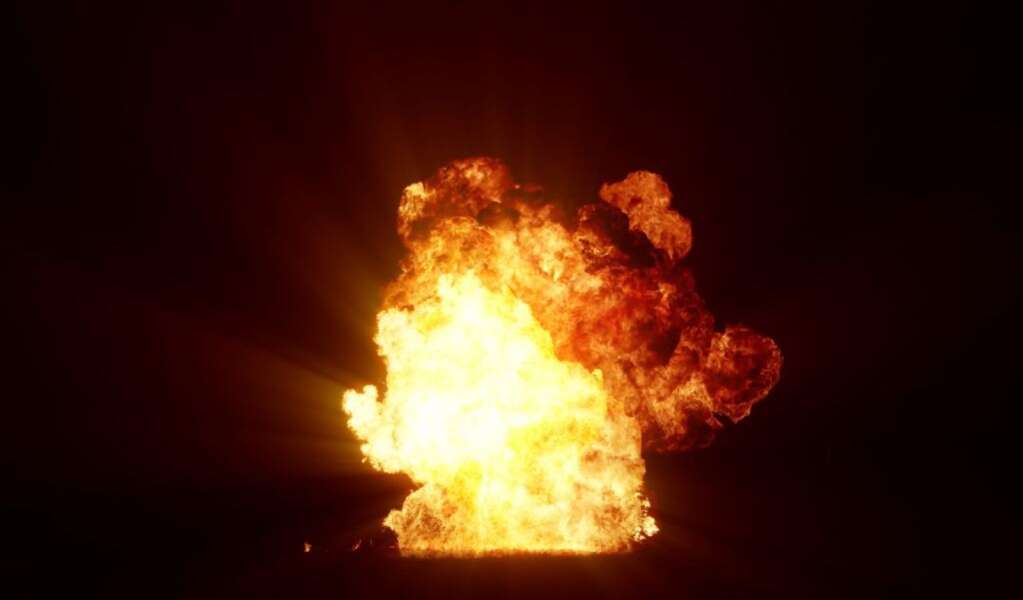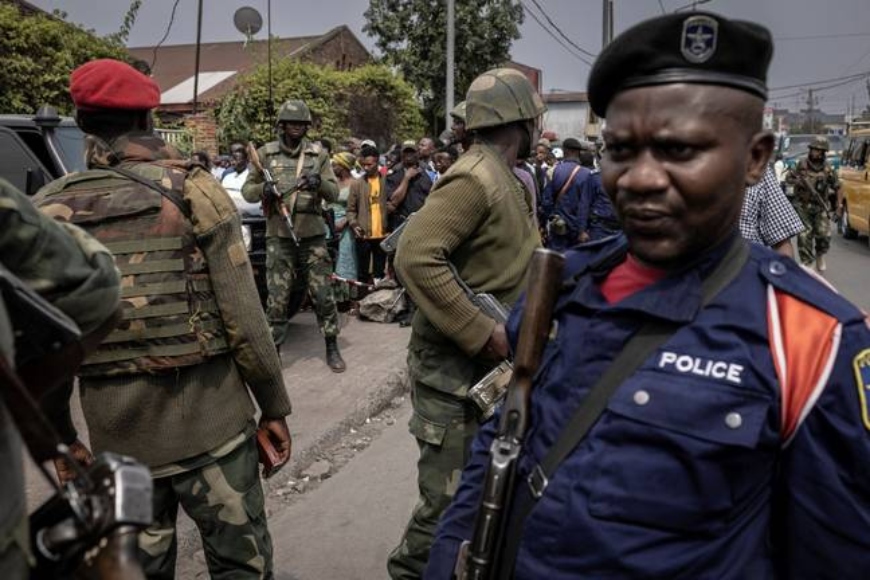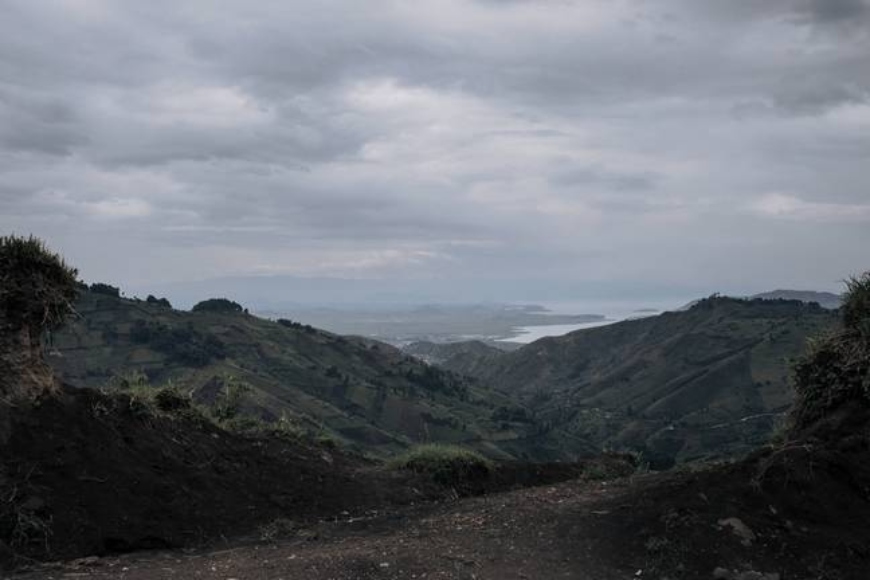At Least 15 People Dead After Children Unknowingly Bring Home Bomb
Tragedy unfolds as at least 15 people dead after children unknowingly bring home bomb. Explore the harrowing details of this devastating incident and the urgent need for heightened awareness and preventive measures to protect communities from such heart-wrenching accidents.
Author:Morgan MaverickReviewer:Professor JhizOct 10, 202368 Shares67.9K Views

In a heart-wrenching incident in North Kivu, Eastern Congo, a community is left in mourning as at least 15 people dead after children unknowingly bring home bomb. The devastating event has sent shockwaves through the region, prompting questions about how such a tragedy could occur.
The unsuspecting tragedy has left families shattered, emphasizing the critical need for humanitarian aid. Immediate efforts focus on providing medical care, shelter, and essential supplies to the affected community. Psychosocial support is paramount, recognizing the deep emotional impact.
Additionally, educational initiatives aim to raise awareness about the hazards of unexploded ordnance, fostering resilience and preventing future tragedies. The globalcommunity's support is vital in aiding the healing and reconstruction process.
15 People Killed By Bomb In North Kivu
At least 15 people dead after children unknowingly bring home bomb they discovered while playing. The incident occurred on Friday evening, October 6, when the children discovered the device near a palm oil tree and returned it to their parents.
While the grownups were trying to find out what the gadget was, the bomb detonated, killing over a dozen people. The explosion occurred in the town of Kyangitsi, Masisi area in the eastern Congo's North Kivu region.
Telesphore Mitondeke, a member of a Masisi grouping of civil society organizations, said:
“„At around 8 p.m. local time, while some of the residents were trying to find out what it was, the bomb exploded.- Telesphore Mitondeke
According to local reports, the vast majority of those killed were women and children. The bomb injured two more persons. According to ABC News, the region has been the scene of skirmishes between local armed groups battling for control of communities for the past two weeks. Many towns have already fallen under the grip of the "Wazalendo" patriot self-defense groups.
According to Mitondeke, the region 'is littered with countless explosive devices abandoned and booby-trapped by fighters.' As a result of the dispute, locals are being urged to be extra cautious and to avoid touching any explosive devices they come across.
Locals are instead being requested to notify authorities so that proper responders can act and dispose with the devices as safely as possible.
Local community leaders have revealed that the 'Wazalendo' patriot self-defense forces have taken control of a portion of the crucial town of Kitshanga in the eastern Democratic Republic of Congo after drivingout the March 23 Movement (M23) rebels.
Bertrand Bisimwa, the president of the M23 rebels, and Lawrence Kanyuka, the group's political spokesperson, have stated that the fightwas started by soldiers from the Armed Forces of the Democratic Republic of the Congo (FARDC) in collaboration with the Wazalendo militia.
Kanyuka stated earlier this month:
“„The Republican Guard, which committed the massacre in Goma under the orders of Mr Tshisekedi Tshilombo, has now joined the widespread attacks of the FARDC, FDLR. The M23 is holding its positions while protecting the population.- Lawrence Kanyuka
Children As Unintentional Couriers
Details emerging from the tragedy indicate that the children found the bomb, perhaps discarded or overlooked in their surroundings, and brought it home. The lack of awareness about the nature of the object turned a routine discovery into a catastrophic event.
Immediate Impact
The detonation resulted in the loss of 15 lives, causing a profound and immediate impact on the affected community. Families are left grappling with the sudden and tragic loss of loved ones, creating a somber atmosphere of grief and disbelief.
Community Response
Local authorities and emergency services swiftly responded to the incident, providing assistance to the injured and initiating investigations to understand the circumstances leading to the presence of the bomb in a residential area. The community has come together to support one another in the face of this unimaginable tragedy.
Questions And Accountability
The incident has raised questions about the security and safety of the community, as well as the potential sources of such hazardous materials. Authorities are under pressure to investigate the origin of the bomb and whether there were any lapses in security protocols that allowed it to reach residential areas.
Impact On Children
The psychological impact on the children involved is a significant concern. Witnessing such a traumatic event and inadvertently being part of its cause can have long-lasting effects on the mental and emotional well-being of the young individuals involved.
Regional Context
North Kivu, located in the eastern part of the Democratic Republic of Congo, has faced numerous challenges, including conflict and displacement. This tragedy adds to the complex set of issues faced by the region, highlighting the need for comprehensive support and solutions.
International Response
The international community is likely to closely monitor developments in the aftermath of this tragedy. Humanitarian organizations and aid agencies may play a crucial role in providing support to the affected community and assisting in the recovery process.
Preventive Measures And Awareness
In the wake of this devastating incident, there is an urgent need for heightened awareness about the potential dangers of unexploded ordnance in conflict-affected regions. Efforts must be made to educate communities, especially children, about identifying and reporting such objects to prevent similar tragedies.
Humanitarian Aid For Congo Victims
In the wake of the tragic incident in the eastern Congo, where at least 15 people lost their lives due to a bomb brought home by unsuspecting children, the urgent need for humanitarian aid has become paramount. The affected community is grappling with the aftermath of this devastating event, and immediate support is crucial to alleviate their suffering.
Immediate Medical Assistance
One of the primary focuses of humanitarian aid is providing immediate medical assistance to those injured in the explosion. Mobile medical units and emergency response teams are deployed to the affected area to treat the wounded, addressing both physical and psychological trauma. The goal is to ensure that survivors receive timely and adequate medical care to enhance their chances of recovery.
Shelter And Basic Necessities
The blast has undoubtedly left many families without homes, exacerbating the humanitarian crisis. Humanitarian organizations work swiftly to provide temporary shelters for those displaced, along with essential supplies such as food, clean water, and hygiene kits. Ensuring access to these basic necessities is crucial for the well-being of the survivors as they cope with the aftermath of the tragedy.
Psychosocial Support
The psychological impact of such a traumatic event cannot be overstated. Humanitarian aid includes provisions for psychosocial support, offering counseling services to those affected, especially children who may be grappling with fear and anxiety. Trained professionals work with the community to provide emotional support and help them navigate the complex process of healing.
Education And Awareness
Preventing future incidents of this nature requires a comprehensive approach. Humanitarian aid extends to educational initiatives aimed at raising awareness about the dangers of unexploded ordnance. Community workshops and awareness campaigns are organized to inform residents, especially children, about the potential hazards in their surroundings and how to respond safely.
Rehabilitation And Reconstruction
Rebuilding the affected community is a long-term goal of humanitarian aid efforts. This involves not only physical reconstruction but also economic and social rehabilitation. Initiatives to restore damaged infrastructure, such as schools and health facilities, are coupled with programs that support livelihoods and economic recovery.
Coordination With Local Authorities
Effective humanitarian aid is contingent upon seamless coordination with local authorities and organizations. Collaborative efforts ensure that resources are allocated where they are needed most, and aid is distributed efficiently. Local partnerships are instrumental in tailoring assistance to the specific needs and cultural context of the affected community.
Humanitarian aid for the victims of the Congo tragedy encompasses a multi-faceted approach. From immediate medical relief to long-term reconstruction, the goal is to restore normalcy and provide a foundation for the affected community to rebuild their lives. The global community's support is crucial in this endeavor, emphasizing the collective responsibility to extend a helping hand in times of crisis.
Preventing Unexploded Ordnance Accidents
Unexploded ordnance (UXO) presents a significant global threat, particularly in regions affected by past conflicts. UXOs are explosive devices that failed to detonate upon impact, leaving them hidden beneath the ground and posing serious risks to civilian populations.
These deadly remnants of warcan cause casualties, disrupt livelihoods, and hinder post-conflict reconstruction efforts. Preventing UXO accidents is paramount to safeguarding communities and ensuring sustainable development in affected areas.
The Global UXO Challenge
- The Legacy of Warfare -Unexploded ordnance can be found in many parts of the world, often in regions that have experienced protracted conflicts or wars. These remnants of past conflicts continue to pose threats to civilians long after peace treaties are signed.
- Humanitarian Consequences -UXO accidents can result in severe injuries or fatalities. Victims, often children, inadvertently stumble upon hidden explosives while playing or farming, leading to tragic consequences.
Prevention Strategies
- Clearance and Disposal -One of the most effective ways to prevent UXO accidents is through clearance and disposal operations. Trained demining teams locate, remove, and safely destroy these hazardous remnants. NGOs and international organizations play a crucial role in these efforts.
- Risk Education -Raising awareness among communities about the dangers of UXOs is essential. Educational campaigns teach individuals how to recognize potential hazards and what to do if they encounter them. This knowledge empowers people to protect themselves and others.
- Community Involvement - Engaging local communities in UXO clearance and risk education programs can yield positive outcomes. By involving residents in these efforts, a sense of ownership and responsibility is fostered, increasing the likelihood of sustained safety practices.
- Technology and Innovation - Advances in technology have improved UXO detection and removal processes. Innovations like drones, ground-penetrating radar, and robotic systems enhance the efficiency and safety of clearance operations.
Impact Of Prevention Efforts
- Reduced Casualties - The primary goal of UXO prevention is to save lives. Effective strategies have led to a significant decrease in UXO-related casualties, protecting vulnerable populations, especially children.
- Economic Recovery -Safer environments promote economic development. Clearance of UXOs allows communities to use land for agriculture, infrastructure development, and other productive purposes, contributing to economic growth.
- Improved Quality of Life -UXO-free areas provide residents with a better quality of life. Families can farm without fear, children can attend school safely, and communities can thrive socially and economically.
Challenges And Ongoing Efforts
- Funding and Resources -UXO clearance and prevention programs require substantial funding and resources. Securing sustained financial support from governments and donors is an ongoing challenge.
- Identifying and Mapping UXO - Accurate information on the locations of UXOs is crucial. In some regions, incomplete records and outdated maps make it difficult to pinpoint these hazards accurately.
Preventing unexploded ordnance accidents is not only a moral imperative but also a vital step toward achieving peace, stability, and sustainable development in regions affected by conflict.
Through international cooperation, funding, technology, and community involvement, the world can continue to make progress in minimizing the risks posed by UXOs. By doing so, we can create safer environments for vulnerable populations and contribute to a brighter future for conflict-affected regions.
At Least 15 People Dead After Children Unknowingly Bring Home Bomb FAQs
What Happened In North Kivu, Eastern Congo, Leading To 15 Deaths?
A tragic incident occurred where 15 people lost their lives after children unknowingly brought home a bomb in North Kivu, Eastern Congo.
How Did The Children Come Across The Bomb?
It appears that the children found the bomb near a palm oil tree while playing, possibly discarded in their surroundings, and brought it home unknowingly.
What Immediate Impact Did The Detonation Have On The Community?
The detonation resulted in a profound and immediate impact, causing grief and disbelief among the affected community.
How Did Local Authorities Respond To The Incident?
Local authorities and emergency services swiftly responded, providing assistance to the injured and initiating investigations into the circumstances.
What Questions Has The Incident Raised About Community Security?
The incident has raised questions about the security and safety of the community, prompting investigations into the source of the bomb and security protocols.
What Preventive Measures Are Needed To Avoid Similar Incidents In Conflict-affected Regions?
There is an urgent need for heightened awareness about the dangers of unexploded ordnance, and efforts must be made to educate communities, especially children, to prevent such tragedies.
Conclusion
At least 15 people dead after children unknowingly bring home bomb. In the aftermath of this heart-wrenching incident, questions about accountability, safety, and the well-being of affected families linger. The tragedy serves as a stark reminder of the vulnerability faced by communities in conflict zones and the urgent need for concerted efforts to prevent such incidents in the future.
Jump to
15 People Killed By Bomb In North Kivu
Children As Unintentional Couriers
Immediate Impact
Community Response
Questions And Accountability
Impact On Children
Regional Context
International Response
Preventive Measures And Awareness
Humanitarian Aid For Congo Victims
Preventing Unexploded Ordnance Accidents
The Global UXO Challenge
At Least 15 People Dead After Children Unknowingly Bring Home Bomb FAQs
Conclusion

Morgan Maverick
Author
Morgan Maverick is an unorthodox news reporter driven by an insatiable hunger for the truth. Fearless and unconventional, he uncovers hidden narratives that lie beneath the surface, transforming each news piece into a masterpiece of gritty authenticity. With a dedication that goes beyond the boundaries of conventional journalism, Morgan fearlessly explores the fringes of society, giving voice to the marginalized and shedding light on the darkest corners.
His raw and unfiltered reporting style challenges established norms, capturing the essence of humanity in its rawest form. Morgan Maverick stands as a beacon of truth, fearlessly pushing boundaries and inspiring others to question, dig deeper, and recognize the transformative power of journalism.

Professor Jhiz
Reviewer
Professor Jhiz brings fun to teaching anatomy. Born in China, she shares her fascination for how the body works.
Students say her lectures are lively with jokes and stories. She draws cartoon diagrams that highlight structures creatively.
Professor seeks to inspire curiosity and joy in anatomy. She treats each class like a show using props and costumes.
When not teaching, Jhiz enjoys karaoke and novelty socks. Her goal is passing on a spirit of wonder to students.
Latest Articles
Popular Articles


